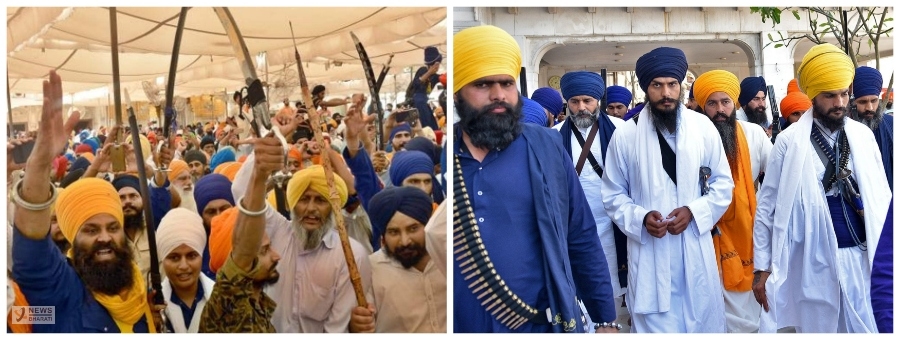NB Explains | Why Punjab Will not Return to Militancy and Separatism
But the situation today in 2023 is vastly different from what it was in that era.
Total Views |
Amritpal Singh, calls for Khalistan, and the attack on the Indian embassy in London has made many of us revisit the memories of Punjab in the 1980s and 1990s. The height of Khalistani separatist movements as well as the ISI backing to it with their strategy of bleeding India with a thousand cuts. But the situation today in 2023 is vastly different from what it was in that era.

Apart from the obvious factors like the state's capacity to control these elements, the Political will of the central government to take actions when it is necessary, as well as the weakened strength of ISI as well as Khalistanis on the ground. On all of these points, we have read and heard a lot on print, electronic as well as social media. But all of these discussions have missed a very key data point that can show us why Militancy/Separatism is not possible in Today’s Punjab as we saw in the late 1980s and early 1990s.
The total fertility rate or TFR is the average number of children that would be born to a female over her lifetime. This data is crucial when we look at any insurgency, separatism, or militancy in any country in any given period post WW2. A TFR of 2.1 is a point that is called a replacement level TFR, where at that rate a society can replace its current population in the future. So anything above 2.1 means the population will grow in the future, whereas a TFR below 2.1 means the population will decrease if large-scale immigration (in the case of a country) or migration (in the case of a region within a county) does not take place. It also indicates the surplus manpower in a household or a region or a country as a whole. A TFR well above 2.1 always creates trouble no matter which region or country we take into account. Adding a low-level state capacity as well as ethnic, and religious fundamentalism to the picture, creates a situation of separatism, militancy, or insurgency. Let us take the example of Kashmir. The TFR of Kashmir valley in the 70s and 80s is estimated to be around 5 (estimated as the exact official numbers are not available due to obvious reasons). The TFR of the 70s and 80s is important as the militants and Jihadists of the late 80s and 90s (the peak of militancy and separatism) had to be born in the 70s or 80s. This means on average each household had 3 men (traditionally men, although not exclusively) to spare for Jihad or separatism, or the so-called independence. This excess of manpower with religious extremism creates a dangerous mix of terrorism, separatism, militancy, etc. Today, the TFR in Kashmir has fallen to 1.4 which is far below 2.1 which is the replacement rate. Once we add the factors mentioned at the beginning of the article, ie, the state's capacity to control these elements, the Political will of the central government to take actions when it is necessary, as well as the weakened strength of ISI as well as Jihadists on the ground, to the TFR of 1.4, the fall in Kashmir’s separatism and terrorism can be easily understood.
Similarly in Punjab, the TFR in 1971 was 5.2 and 5.5 in Rural Punjab. Even in 1981, it was 4. This means on average each household had 3 men (traditionally men, although not exclusively) to spare for the cause of Khalistan, Separatism, and Militancy. As we saw in Kashmir, the fall in Punjab’s TFR is also massive. Today, TFR in Punjab is 1.6, ie. well below 2.1 which is the replacement rate. This means, both of these states have simply run out of men (again, traditionally men, although not exclusively) to spare for the JIhadist, Khalistani, separatist activities. We can also see similar numbers in Ireland and their conflict with the UK and the creation of the IRA. Eventually, when the Good Friday agreement was signed in 1998 the TFR in Ireland was down to 1.94 from the peak of 3.93 in the 70s. We can find many such examples around the world where religious extremism and high TFR have led to such conflicts.


